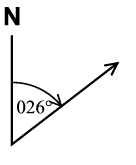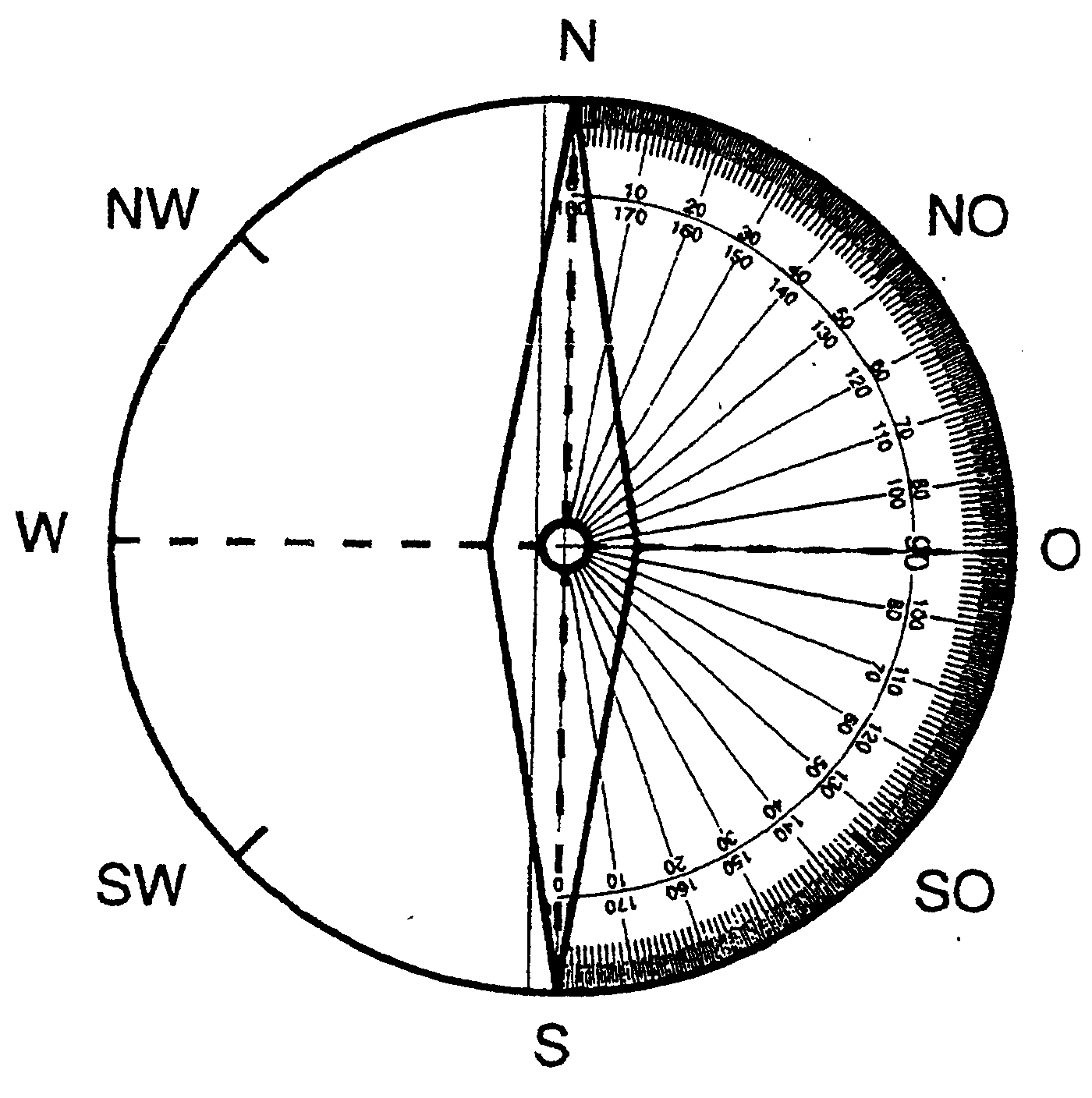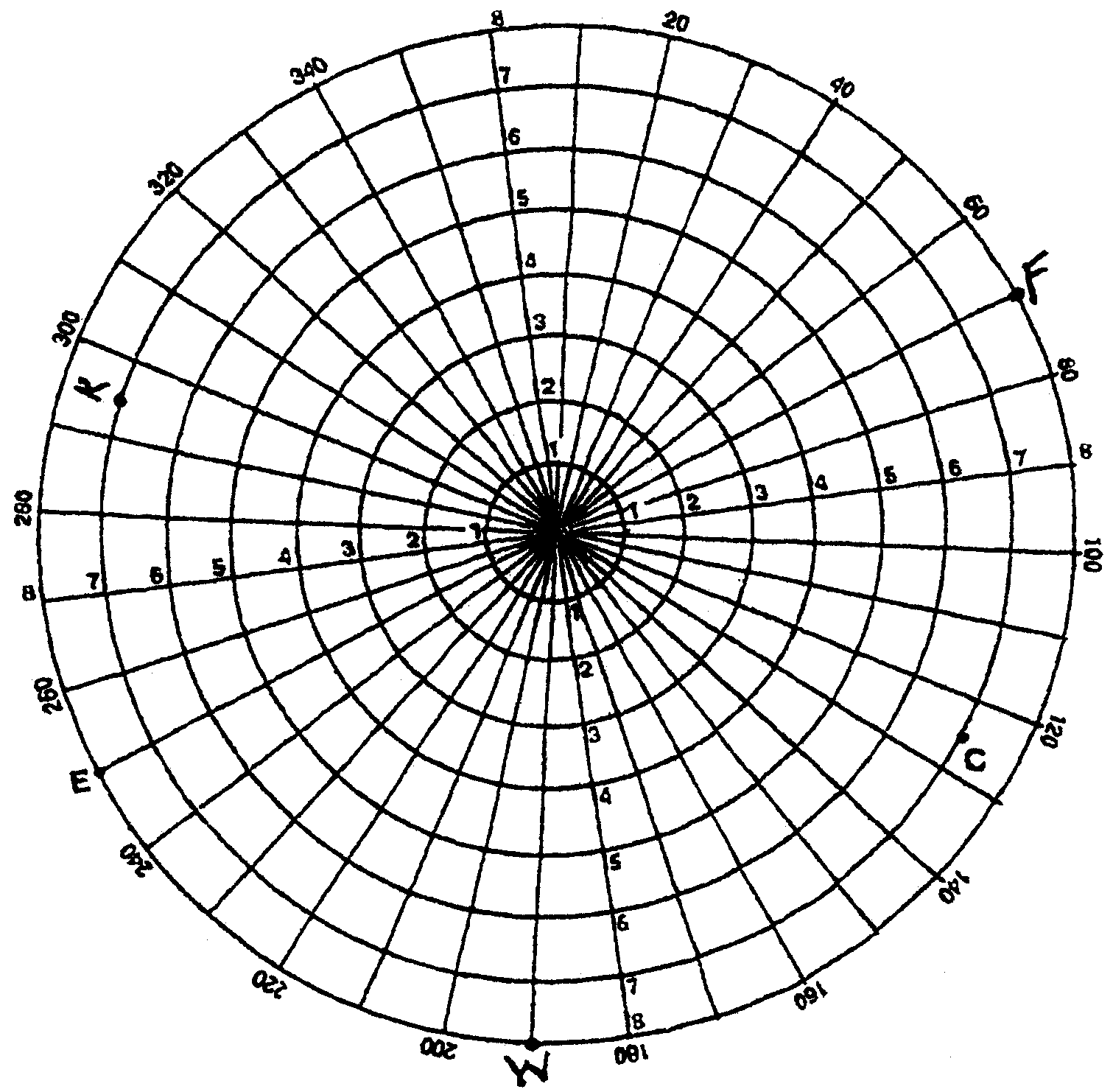| << Chapter < Page | Chapter >> Page > |
(b) right
(c) obtuse
(d) straight
(e) reflex
(f) revolution
9.2
(a) 37°
(b) 128°
(c) 60°
(d) 90°
(e) 120°
(f) 87°
(b) The length of the lines has nothing to do with the size of the angles
.
E : 090°
SE : 133°
S : 180°
12.3 C : 125° F : 070°
E : 250° K : 295°
W : 190°

9. LET US REVISE
When lines are joined, angles are formed.
9.1 Work in groups of three. See which group can state the kind of angle in each diagram!

.2 Estimate the sizes of the following angles. Then measure them carefully with your protractor and complete the table.

º





| Angle | Estimated | Measured | |
| a) | 1 | _____________ | _____________ |
| b) | 2 | _____________ | _____________ |
| c) | 3 | _____________ | _____________ |
| d) | 4 | _____________ | _____________ |
| e) | 5 | _____________ | _____________ |
| f) | 6 | _____________ | _____________ |
9.3 Draw the following angles with the help of your protractor:
a) 49°
b) 97°
c) 196°
d) 216°
9.4 BRAIN-TEASER!
a) Which angle is the larger: a or b?


_____________________________________________________________________
b) What have you realised? ___________________________________________
_____________________________________________________________________
_____________________________________________________________________
_____________________________________________________________________
9.5 REMEMBER!
The size of an angle is determined by the amount of rotation there is around the fulcrum.
| λ POINT |
| A number of points together form a |
| |
| LINE |
| Lines segments joined give |
| |
| ANGLES |
| Angles joined together form |
| |
| FIGURES |
11. BRAIN-TEASER!
What is the smallest number of straight lines that can be used to join the dots below WITHOUT lifting up your pencil?
(Can you do it with three lines?)

12. ANGLES AND NAVIGATION
12.1 Did you know?
In navigation and aviation, direction is always determined in terms of the angle which is made by the route (clockwise) with the north line.
i.e. we measure in degrees, the amount of turning from north.
Line to the route in a clockwise direction.
The north line is 0˚.
A bearing is always indicated with three digits. A bearing of 26˚ is written as 026˚.

12.2 Look carefully at this magnetic compass. A compass needle always points to north. Now write down the following directions in degrees.

NE : ____________________
E : ____________________
SE : ____________________
S : ____________________

12.3 Study this radar screen which can be found on a boat. Write the direction of the following boats in degrees:
C : ____________________
E : ____________________
F : ____________________
K : ____________________
W : ____________________
Learning Outcome 4: The learner will be able to use appropriate measuring units, instruments and formulae in a variety of contexts.
Assessment Standard 4.8: We know this when the learner classifies angles into acute, right, obtuse, straight, reflex or revolution;
Assessment Standard 4.9: We know this when the learner estimates, compares, measures and draws angles accurate to one degree using protractors.
Learning Outcome 3: The learner will be able to describe and represent characteristics and relationships between two-dimensional shapes and three-dimensional objects in a variety of orientations and positions.
Assessment Standard 3.8: We know this when the learner locates positions on co-ordinate systems (ordered grids) and maps.

Notification Switch
Would you like to follow the 'Mathematics grade 7' conversation and receive update notifications?